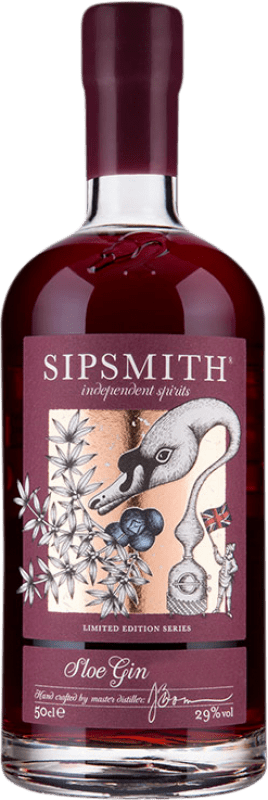Partida Creus Anónimo Ancestral Brut 75 cl. Origin.
Producer.
Partida Creus (Celler Partida Creus).
Name.
Partida Creus Anónimo Ancestral.
Variety.
![]() Tempranillo, Garnacha — Grenache, Xarel·lo, Parellada.
Tempranillo, Garnacha — Grenache, Xarel·lo, Parellada.
Country of origin.
Weight.
1.500 gr. (1,5 Kg.).
Producer |
|
Name |
Partida Creus Anónimo Ancestral. |
Variety |
|
Country of origin |
|
Weight |
1.500 gr. (1,5 Kg.). |
Partida Creus Anónimo Ancestral Brut 75 cl. Data sheet.
Typology.
Variety.
![]() Tempranillo, Garnacha — Grenache, Xarel·lo, Parellada.
Tempranillo, Garnacha — Grenache, Xarel·lo, Parellada.
Vintage / Harvest.
Format.
Bottle.
Capacity.
75 cl.
Alcohol content.
12.5% Vol.
Sugar content.
Because of its sugar content, it is classified as "Brut".
It contains between 6 and 12 grams of sugar per liter.
Brut Nature: < 3 gr/L
Extra Brut: 3 - 6 gr/L
Brut: 6 - 12 gr/L
Extra Dry: 12 - 17 gr/L
Dry: 17 - 32 gr/L
Semi Dry: 32 - 50 gr/L (Semi Sweet)
Sweet: > 50 gr/L
Weight.
1.500 gr. (1,5 Kg.).
Visual tasting note.
Medium size bubble, Good bubble release, Durable crown, Golden white.
Olfactory tasting note.
Peach, Dried apricots, Very floral, Caramel notes.
Tasting note.
Good presence of carbon, Light toasts, Ends in breadth, Well harmonized carbon.
Recommended pairing.
Pasta dishes, Pasta, Cookies, Roasted fruit.
Consumption temperature.
6ºC - 8ºC.
Consumption.
It is recommended to drink in moderation and demonstrate a responsible consumption of alcoholic beverages.
Typology |
|
Variety |
|
Vintage / Harvest |
Currently marketed by the producer. |
Format |
Bottle. |
Capacity |
75 cl. |
Alcohol content |
12.5% Vol. |
Sugar content |
Because of its sugar content, it is classified as "Brut". |
Weight |
1.500 gr. (1,5 Kg.). |
Visual tasting note |
Medium size bubble, Good bubble release, Durable crown, Golden white. |
Olfactory tasting note |
Peach, Dried apricots, Very floral, Caramel notes. |
Tasting note |
Good presence of carbon, Light toasts, Ends in breadth, Well harmonized carbon. |
Recommended pairing |
Pasta dishes, Pasta, Cookies, Roasted fruit. |
Consumption temperature |
6ºC - 8ºC. |
Consumption |
It is recommended to drink in moderation and demonstrate a responsible consumption of alcoholic beverages. |
Partida Creus Anónimo Ancestral Brut 75 cl. Description.
Product reference.
WAN4545232
Accessories.
This product is provided in the conditions and format in which it is marketed at the current time. In cases where the product includes an additional packaging, box and/or case, These accessories will be included in the shipment as long as they comply with the dimensions of the special packaging adapted and approved for the transport of beverages.
In general, the images of the products that we publish on our website are only relevant for graphic purposes. The images do not show other accessories such as additional packaging (box, case, etc.) or promotional elements that may occasionally be included by the manufacturer along with the product. If you wish, we can inform you about the additional packaging, elements and accessories included with the product at the current time.
Weight.
1.500 gr. (1,5 Kg.).
Actual price.
19,95 € . This product is currently not available.
Storage position.
Lateral position, horizontal bottle.
Storage temperature.
Store at a constant temperature between 10-17ºC.
Humidity should be constant around 60-80%.
Recommendations.
Keep preferably away from light.
Product reference |
WAN4545232 |
Accessories |
This product is provided in the conditions and format in which it is marketed at the current time. In cases where the product includes an additional packaging, box and/or case, These accessories will be included in the shipment as long as they comply with the dimensions of the special packaging adapted and approved for the transport of beverages. |
Weight |
1.500 gr. (1,5 Kg.). |
Actual price |
19,95 € . This product is currently not available. |
Storage position |
Lateral position, horizontal bottle. |
Storage temperature |
Store at a constant temperature between 10-17ºC. |
Recommendations |
Keep preferably away from light. |
Partida Creus Anónimo Ancestral Brut 75 cl. Legal notice.
Please keep in mind.
The information provided and referred to the product features and details has been provided by the expert, manufacturer or producer or published on the official sites. In no case can it be considered as assessment made by our team, unless expressly stated otherwise.
We suggest you to refer to the comments and reviews posted by our customers and users to expand and contrast this information.
Misreading.
Our team provides this information and details in ESPAÑOL language.
If you browse in another language note that the information contained may have been translated from the original language through an automated real-time process that has not been supervised by our human team.
In case of doubt, misunderstanding or misreading about the content of this information you should refer to the original version of this page or contact our customer service team.
Product image.
The product image or its label is only relevant for graphic purposes, so it may not match the identification of the vintage or other features and details of the product for sale. This product is provided in the conditions and format in which it is marketed at the current time.
This product is not identified or supplied in a specific vintage. The product image and label may not match the vintage identification or other characteristics and details of the product for sale.
Accessories.
This product is provided in the conditions and format in which it is marketed at the current time. In cases where the product includes an additional packaging, box and/or case, These accessories will be included in the shipment as long as they comply with the dimensions of the special packaging adapted and approved for the transport of beverages.
In general, the images of the products that we publish on our website are only relevant for graphic purposes. The images do not show other accessories such as additional packaging (box, case, etc.) or promotional elements that may occasionally be included by the manufacturer along with the product. If you wish, we can inform you about the additional packaging, elements and accessories included with the product at the current time.
Country of origin.
Spain. This product is shipped from Spain.
Legal Notice.
It is against the law to sell or supply alcohol to, or to obtain alcohol on behalf of a person under the age of 18 years.
If you are not more than 18 years old, you must leave this website.
Return policy.
Return policy.
Last update: Wednesday, 21 May 2025
For further information: Terms and conditions of the service.
Please keep in mind |
The information provided and referred to the product features and details has been provided by the expert, manufacturer or producer or published on the official sites. In no case can it be considered as assessment made by our team, unless expressly stated otherwise. |
Misreading |
Our team provides this information and details in ESPAÑOL language. |
Product image |
The product image or its label is only relevant for graphic purposes, so it may not match the identification of the vintage or other features and details of the product for sale. This product is provided in the conditions and format in which it is marketed at the current time. |
Accessories |
This product is provided in the conditions and format in which it is marketed at the current time. In cases where the product includes an additional packaging, box and/or case, These accessories will be included in the shipment as long as they comply with the dimensions of the special packaging adapted and approved for the transport of beverages. |
Country of origin |
Spain. This product is shipped from Spain. |
Legal Notice |
It is against the law to sell or supply alcohol to, or to obtain alcohol on behalf of a person under the age of 18 years. |
Return policy |
Return policy. |
No customer reviews at this time. Be the first to post a review!
Partida Creus Anónimo Ancestral Brut 75 cl.
Additional information.
«Partida Creus Anónimo Ancestral» is produced by Partida Creus (Celler Partida Creus). In the elaboration of «Partida Creus Anónimo Ancestral» the grape varieties that are used are Tempranillo, Garnacha — Grenache, Xarel·lo and Parellada. «Partida Creus Anónimo Ancestral» is a product from Spain. The weight of «Partida Creus Anónimo Ancestral» is 1.500 grams (1,5 Kg.).
«Partida Creus Anónimo Ancestral» belongs to the White Sparkling Wine category. In the elaboration of «Partida Creus Anónimo Ancestral» the grape varieties that are used are Tempranillo, Garnacha — Grenache, Xarel·lo and Parellada. This product is not identified or supplied in a specific vintage. The product image and label may not match the vintage identification or other characteristics and details of the product for sale. If you wish, we can provide you with this information, and, of course, You can request a specific vintage and we will try our best to satisfy you. «Partida Creus Anónimo Ancestral» is marketed in bottle 75 cl format. The alcohol content of «Partida Creus Anónimo Ancestral» is 12.5% Vol. Because of its sugar content, it is classified as "Brut". It contains between 6 and 12 grams of sugar per liter. The weight of «Partida Creus Anónimo Ancestral» is 1.500 grams (1,5 Kg.). Regarding the tasting of «Partida Creus Anónimo Ancestral», the notes medium size bubble, good bubble release, durable crown and golden white stand out in its visual phase. Among the predominant notes of the olfactory tasting are peach, dried apricots, very floral and caramel notes. Finally, The tasting of «Partida Creus Anónimo Ancestral» in the taste phase stands out with good presence of carbon, light toasts, ends in breadth and well harmonized carbon. It is recommended to pair «Partida Creus Anónimo Ancestral» with pasta dishes, pasta, cookies and roasted fruit. The optimum temperature to consume «Partida Creus Anónimo Ancestral» is 6ºC - 8ºC.
The weight of «Partida Creus Anónimo Ancestral» is 1.500 grams (1,5 Kg.). The final sale price of «Partida Creus Anónimo Ancestral» is 19,95 € in PrivateCeller.es. Temporarily «Partida Creus Anónimo Ancestral» is not available for sale on PrivateCeller.es.
The information provided and referred to the product features and details has been provided by the expert, manufacturer or producer or published on the official sites. In no case can it be considered as assessment made by our team, unless expressly stated otherwise. We suggest you to refer to the comments and reviews posted by our customers and users to expand and contrast this information. The product image or its label is only relevant for graphic purposes, so it may not match the identification of the vintage or other features and details of the product for sale. This product is provided in the conditions and format in which it is marketed at the current time. Spain. This product is shipped from Spain.
Variety:
Tempranillo, Garnacha — Grenache, Xarel·lo and Parellada.
Partida Creus Anónimo Ancestral Brut 75 cl.
Variety Tempranillo.
See Tempranillo White Sparkling Wine list.
 Español [ ES ]
Español [ ES ]Origen.
Hasta hace no demasiado tiempo, se tenía la sospecha de que la tempranillo y la pinot noir estaban emparentadas, pero recientes investigaciones ampelográficas descartan casi al cien por ciento esa posibilidad. La vitis vinífera es, en España, el antecesor común a la mayoría de las vides cultivadas actualmente y fue introducido en la zona sur de la Península Ibérica por los fenicios. Posteriormente se extendió por toda España, aunque sólo existen algunas referencias al nombre tempranilla. En el siglo XII, en el Libro de Alexandre, se mencionan las uvas por el nombre “tempraniella” refiriéndose a zonas que hoy se encontrarían en la Ribera del Duero. Hasta el siglo XVII, esta variedad se cultivaba exclusivamente en la España continental, donde las condiciones climáticas del tercio norte de la península eran las más apropiadas para su desarrollo. En el siglo XVII los colonizadores españoles llevaron a América semillas de tempranillo, manteniéndose prácticamente inalterada genéticamente hasta la actualidad. La uva tempranillo está actualmente disfrutando de un “renacimiento” en la producción vinícola mundial, sobre todo como resultado de los esfuerzos de una "nueva ola" de cultivadores españoles, que mostraron que era posible producir vinos de gran carácter y calidad en zonas fuera de la región riojana.
Características.
La uva tempranillo es una variedad de ciclo corto con brotación en época media y maduración temprana, de buena fertilidad y alta producción que suele ser regular. Las cepas de esta variedad son vigorosas y de porte muy erguido. Producen racimos grandes, con hombros marcados, compactos, uniformes en el tamaño y en el color de las bayas, su pedúnculo es de tamaño medio y poco lignificado, excepto en la base. Las uvas tienen un tamaño entre mediano y grande, con epidermis muy oscura y tonalidades azuladas, esféricas y muy implantadas en su pedicelo lo que las hace de difícil desprendimiento. El hollejo es grueso y su pulpa, sin apenas pigmentación, es blanda, carnosa y muy jugosa. Esta variedad de uva también recibe el nombre de Cencibel, Temprana, Tinto fino, Tinta fina, Tinta de Toro, Tinta del Pais, Ull de llebre, Tinto Roriz Primerenc, Aranda, Argand, Chinchillana, Marinera, Santa Ana, Santiaguera, Ullada. Debido a su gran sensibilidad a las plagas y enfermedades, particularmente la filoxera que devastó las vides en el siglo XIX, y aún amenaza actualmente los viñedos, la tempranillo española ha sido a menudo injertada en portainjertos más resistentes, de lo que resulta un estilo de uva ligeramente diferente a aquellos hoy cultivados en Chile y Argentina. La uva tempranillo es muy regular en el cuajado, muy sensible a plagas y enfermedades, poco resistente a la sequía extrema y a las temperaturas altas. Variedad muy sensible a las enfermedades de la madera especialmente eutipiosis y complejo de la yesca. También es muy sensible al oídio, polilla del racimo, a los cicadélidos y a los ácaros, así como a las roturas por viento intenso si no están los sarmientos bien entutorados. Tiene una resistencia media al mildiu y al black rot. Soporta bastante bien los fríos de primavera ya que en este caso la brotación se retrasa. Poco sensible a la excoriosis. Tolera bien la sequía salvo si ésta es muy extrema. Responde bien a los aportes hídricos.
Zonas de cultivo.
A pesar de su aparente fragilidad, la tempranillo viajó ampliamente durante el último siglo, después de mucho ensayo y error, se ha establecido en un sorprendente número de países por todo el mundo. En España se encuentran viñedos de esta variedad en casi la totalidad del país, estando autorizada en 38 Denominaciones de Origen y considerada como variedad preferente en 14 de ellas. Se está adaptando muy bien en la viticultura de sudamérica. Durante la última década, han plantado tempranillo cultivadores de lugares tan lejanos como Australia, los Estados Unidos y Sudáfrica.
Vinos.
Los vinos de tempranillo suelen elaborarse en coupage, pero siendo muy mayoritariamente tempranillo, normalmente más del 90% de la mezcla. Se suelen aportar proporciones de otras variedades como garnacha, mazuela, graciano, merlot y cabernet Sauvignon, para aportarle azúcar y acidez. Los vinos de tempranillo tienen un carácter muy singular, con mucho cuerpo, acidez suave y taninos secos. Es una variedad que integra a la perfección con el roble, danto resultados espectaculares con su crianza en barricas de roble, tanto francés como americano, que aportan notas de vainilla y coco, frutas y sabores especiados.
White Sparkling Wine Tempranillo
Product Selection White Sparkling Wine Tempranillo.
Partida Creus Anónimo Ancestral Brut 75 cl.
Variety Garnacha — Grenache.
See Garnacha — Grenache White Sparkling Wine list.
 Español [ ES ]
Español [ ES ]Origen.
El origen de la uva garnacha está localizado, según se ha comprobado ampelográficamente, en la región de Aragón, en el noreste de España. Desde allí fueron llevados a otros territorios de la Corona de Aragón, como Cerdeña o el Rosellón, en el sur de Francia. Uno de los primeros nombres que recibió fue "tinto aragonés”. En Cerdeña se conoce como cannonau, donde se afirma que se originó allí y que se extendió a otras tierras del Mediterráneo que estaban bajo el gobierno de Aragón. La garnacha ya estaba bien difundida a ambos lados del Pirineo cuando la región de Rosellón fue anexionada por Francia. A partir de ahí la vid se abrió camino a través de Languedoc y al sur de la región del Ródano, donde quedó bien asentada en el siglo XIX. A pesar de su preponderancia en las cercanas regiones de Navarra y Cataluña, la garnacha no fue plantada ampliamente en La Rioja hasta principios del siglo XX, cuando se replantaron los viñedos después de la epidemia de filoxera. Australia comenzó a plantar cepas de garnacha en el siglo XVIII, convirtiéndose en la variedad de uva de vino tinto más plantada del país hasta que fue superada por la syrah a mediados de los años sesenta. En el siglo XIX, los viticultores de California apreciaron la capacidad de la vid para producir altos rendimientos y soportar el calor y la sequía.
Características.
La variedad garnacha crece en cepas muy vigorosas de porte erguido, con elevada fertilidad y muy productivas. Los racimos son entre medianos y grandes, muy compactos y de bayas bastante uniformes, con pedúnculo corto. Las bayas son medianas de tamaño, esféricas, con epidermis de color rojo violeta oscuro, de difícil desprendimiento de su pedicelo. Su hollejo es fino, muy sensible a roces y con mucha pruina. La consistencia de su pulpa es blanda, muy jugosa, sin pigmentación. La garnacha tinta es una variedad muy sensible al mildiu tanto en hojas como en racimos, al black rot, a la excoriosis y a la yesca. Resiste muy bien al oídio, pero no al oídio tardío. Es muy sensible a distintos tipos de corrimientos ya sean fisiológicos, por frio, o inducidos por determinados patrones como Rupestris de Lot. Se ve bastante afectada por la polilla del racimo y los cicadélidos. Sensible a la necrosis bacteriana y a los virus del amarillo y bandeado de nervios, así como al desecado del raquis y por ello con altos requerimiento en magnesio. Su sensibilidad a la botritis y a la podredumbre ácida es media. No tolera bien los suelos muy húmedos o encharcados. Las cepas de garnacha son algo sensibles al corrimiento y poco a la eutipiosis y a los ácaros. Son cepas que resisten muy bien el viento y la sequía, adaptándose a cualquier tipo de suelo. Sus podas han de ser cortas, dando buenas producciones y de calidad al disponerse en espalderas, pero producciones excesivas reducen el color y minimiza su contenido en azúcar y pierde aroma. También es exigente en fósforo y boro. Poco exigente en nitrógeno.
Zonas de cultivo.
La garnacha está muy presente en todo el mundo, destacando Francia y España, aunque desde finales del siglo XX la superficie plantada ha ido decreciendo debido a que se han puesto de moda otras viñas como tempranillo, cabernet Sauvignon y merlot. En España es común en Borja y Cariñena, ambas en Aragón. Se usa en las zonas de Denominación de Origen Calificada de la Rioja y Priorato, además de en las áreas montañosas al suroeste de Madrid, al norte de la provincia de Toledo (D.O. Méntrida) y en Cebreros (Ávila). Otras regiones vitícolas con considerables plantaciones de garnacha incluyen Costers del Segre, L'Empordá-Costa Brava, La Mancha, Madrid, Penedés, Somontano, Tarragona, Terra Alta. Es una variedad recomendada en las comunidades autónomas de Aragón, Castilla-La Mancha, Castilla y León, Cataluña, Extremadura, Madrid, País Vasco y Comunidad Valenciana y otras con menor presencia. Es la uva protagonista de una gran mayoría de los vinos rosados de la D.O. Navarra. También se elaboran vinos de esta variedad, ya sea monovarietal o coupage, en Francia, Italia, Australia y EE.UU y en menor medida, en Mexico, chile, Uruguay, Argentina y Sudáfrica.
Vinos.
La garnacha es una uva que se utiliza, en muchas zonas, para mejorar el color y la graduación alcohólica de vinos de otras variedades. Los Los vinos jóvenes de garnacha tienen aromas de pimienta recién molida pero manteniendo aromas de frambuesa y moras. Al envejecer, con poca crianza en barricas de roble, los vinos mantienen su color potente, adquieren aromas a fruta madura, manzana y toques minerales, sobre todo los procedentes del Priorato. Son vinos de grado alcohólico elevado, afrutados, redondos y amables, con gran intensidad aromática (frutas negras muy maduras, ciruelas secas) y con buena capacidad de crianza.
White Sparkling Wine Garnacha — Grenache
Product Selection White Sparkling Wine Garnacha — Grenache.
Partida Creus Anónimo Ancestral Brut 75 cl.
Variety Xarel·lo.
See Xarel·lo White Sparkling Wine list.
 Español [ ES ]
Español [ ES ]Origen.
Esta variedad de uva blanca, de etimología italiana chiarello –clarete-, tiene su origen y capitalidad en Cataluña siendo el fruto de un cruce entre la gibi y la brustiano faux. Ya se tienen referencias de esta uva en el siglo X, cuando se utilizaba en Alella como mistela y sus vinos tenían aromas a uva pasa. En esa época era muy apreciada por alcanzar un buen grado alcohólico y acidez. También es conocida como Pansa Blanca, Pansal, Castoixa, Xarello y Sucre.
Características.
Es una variedad vigorosa, de porte tumbado y con mucha ramificación de sarmientos muy gruesos, adecuado para ser conducido en espaldera. Disfruta de una buena fertilidad, pero es de producciones irregulares. Sus racimos son de tamaño medio, con uvas uniformes, poco compactos y con hombros bien definidos. Las bayas son de tamaño medio, esféricas, difíciles de desprender de sus pedúnculos, con una piel de color verde amarilla, variando a dorado oscuro al madurar. El hollejo es grueso y consistente pero muy sensible rozamientos y escaso de pruina. La pulpa carece de pigmentación, aunque al sobremadurar suele oscurecerse, es consistente, dura, jugosa y afrutada. Al ser de desborre precoz puede verse afectada por las heladas primaverales en plantaciones situadas en terrenos hundidos. Es una variedad vigorosa pero sensible al corrimiento del racimo cuando los frutos aún no han terminado de cuajar. La disminución de bayas por racimo está acentuada en los años en que las condiciones climatológicas de cambios de temperatura, humedad y lluvias influyen desfavorablemente en el proceso de cuajado. Es muy sensible al mildiu, al oidio y a la botritis, así como a la polilla del racimo y a los ácaros. Por el contrario, resiste bastante bien a los ataques de Botrytis.
Zonas de cultivo.
El rango de altitudes a las que esta variedad funciona bien va desde el nivel del mar hasta los 400m, siendo una cepa muy rústica que se adapta muy bien a climas cálidos y secos. Hoy es una variedad extensamente cultivada en la D.O. Penedès, donde es la variedad con mayor superficie de cultivo, y en el Campo de Tarragona. También se cultiva en Castilla-la Mancha, Castilla y León, Extremadura, Mallorca y Aragón. Además de en la D.O. Penedés, existen viñedos de xarel·lo en las denominaciones de origen Alella, Costers del Segre, Tarragona y Cava. La extensión de plantaciones de xarel·lo es de aproximadamente 8.400Ha.
Vinos.
El coupage de Xarel·lo junto con la Parellada y la Macabeo, ha sido la combinación clásica que tradicionalmente se han empleado para la elaboración del cava. Esta variedad le aporta al cava cuerpo, estructura, grado alcohólico y acidez. Produce vinos con extracto, consistentes y voluminosos en boca. En nariz da aromas frescos y frutales a manzana, limón y pomelo. Los vinos jóvenes son suaves, con un carácter sedoso, pero con cuerpo, buena acidez, afrutados, aromáticos y con excelente graduación alcohólica.
White Sparkling Wine Xarel·lo
Product Selection White Sparkling Wine Xarel·lo.
Partida Creus Anónimo Ancestral Brut 75 cl.
Variety Parellada.
See Parellada White Sparkling Wine list.
 Español [ ES ]
Español [ ES ]Origen.
Originaria de Cataluña, la Parellada es una variedad bien adaptada a altitudes elevadas, más frías, donde el periodo de crecimiento es más largo, permitiendo un pleno desarrollo de la acidez y aromas a cítricos. En suelos fértiles alcanza unos buenos niveles de producción. La parellada es la más fina de las variedades blancas tradicionales del Penedès. Es una de las uvas básicas para la elaboración del cava, junto con la macabeo y la xarel·lo.
Características.
Cepa de maduración tardía, gran vigor y porte tumbado, la parellada es una viña de desborre precoz y elevada producción. Tiene una capacidad media de enriquecimiento en azúcares. Alcanza una madurez óptima en las zonas más elevadas del Penedés, la zona donde está más implantada. Los racimos de parellada son de gran tamaño, bastante compactos, con los hombros muy marcados y homogéneos. Los pedúnculos son delgados y de longitud media, con baja lignificación. Las bayas de la Parellada son de tamaño mediano, redondeadas y ligeramente elípticas en sección longitudinal, su piel es de un color amarillo dorado-verdoso, con un racimo de tamaño más bien grande y apretado. Su hollejo es grueso, pulpa verde, consistente y bastante jugosa con aroma peculiar. Estas viñas dan una elevada producción al tener mucho vigor, fertilidad elevada y gran tamaño de los racimos, sin embargo tienen dificultad en la maduración. La cepa de uva parellada es muy sensible al mildiu, bastante a la podredumbre ácida y al oídio y baja a la botritis. Su acidez es elevada.
Zonas de cultivo.
La Parellada es una variedad de uva blanca española, cultivada principalmente en las zonas altas de Cataluña, aunque también está autorizado su cultivo en las Comunidades de Aragón, Baleares, Navarra, País Vasco, La Rioja, Extremadura, Madrid y Castilla la Mancha. Conocida también con otros nombres, como Martorella, Masiá, Montonero, Montonega y Montonet, podemos encontrarla bajo diversas Denominaciones de Origen españolas, tales como Alicante, Valencia, Penedés, Terra Alta o Tarragona.
La parellada es recomendada para la comunidad autónoma de Cataluña. Además, es una variedad autorizada en las comunidades de Aragón, Baleares, Castilla-La Mancha, Extremadura, Comunidad de Madrid, Navarra, País Vasco y La Rioja. Se cultiva en las denominaciones de origen Alella, Binissalem-Mallorca, Cariñena, Cataluña, Cava, Conca del Barberá, Costers del Segre, La Mancha, Penedés, Pla de Bages, Pla i Llevant, Ribera del Guadiana, Tarragona, Terra Alta, Utiel-Requena y Vinos de Madrid.
Vinos.
Produce blancos aromáticos, secos, de graduación moderada, aroma fresco y una delicada acidez afrutada. Los vinos son así apreciados, por un lado, por sus aromas florales y afrutados de cítricos, piña y frutas tropicales y, por otro, por su sedosidad y consistencia, que le confieren gran riqueza y equilibrio en boca. Los vinos monovarietales obtenidos a partir de esta variedad, suelen ser de un amarillo verdoso pálido, de poco cuerpo y baja graduación alcohólica (entre 9 y 10º), así como poco ácidos, siendo ideal su consumo como vino joven. En cuanto a nariz, sus aromas son sutiles y elegantes a flores. En Cataluña suele mezclarse con macabeo y xarel·lo para producir el vino blanco espumoso cava, para darle estructura, finura, longitud y elegancia.1 Además, es usada como uva de mezcla para vinos blancos jóvenes. Algunos productores la mezclan con chardonnay y con sauvignon blanc.
White Sparkling Wine Parellada
Product Selection White Sparkling Wine Parellada.
Partida Creus Anónimo Ancestral Brut 75 cl.
Data sheet.
Partida Creus Anónimo Ancestral Brut 75 cl.
White Sparkling Wine. Partida Creus. Anónimo Ancestral. Brut. Spain. Tempranillo, Garnacha — Grenache, Xarel·lo, Parellada. 75 cl..
Variety.
![]() Tempranillo, Garnacha — Grenache, Xarel·lo, Parellada.
Tempranillo, Garnacha — Grenache, Xarel·lo, Parellada.
Country of origin.
Format.
Bottle.
Capacity.
75 cl.
Alcohol content.
12.5% Vol.
Sugar content.
Because of its sugar content, it is classified as "Brut".
It contains between 6 and 12 grams of sugar per liter.
Brut Nature: < 3 gr/L
Extra Brut: 3 - 6 gr/L
Brut: 6 - 12 gr/L
Extra Dry: 12 - 17 gr/L
Dry: 17 - 32 gr/L
Semi Dry: 32 - 50 gr/L (Semi Sweet)
Sweet: > 50 gr/L
Consumption temperature.
6ºC - 8ºC.
Vintage / Harvest.
Visual tasting note.
Medium size bubble, Good bubble release, Durable crown, Golden white.
Olfactory tasting note.
Peach, Dried apricots, Very floral, Caramel notes.
Tasting note.
Good presence of carbon, Light toasts, Ends in breadth, Well harmonized carbon.
Recommended pairing.
Pasta dishes, Pasta, Cookies, Roasted fruit.
Typology.
Producer.
Partida Creus (Celler Partida Creus).
Name.
Partida Creus Anónimo Ancestral.
Weight.
1.500 gr. (1,5 Kg.).
Product reference.
WAN4545232
Actual price.
19,95 € . This product is currently not available.
Please keep in mind.
The information provided and referred to the product features and details has been provided by the expert, manufacturer or producer or published on the official sites. In no case can it be considered as assessment made by our team, unless expressly stated otherwise.
We suggest you to refer to the comments and reviews posted by our customers and users to expand and contrast this information.
Misreading.
Our team provides this information and details in ESPAÑOL language.
If you browse in another language note that the information contained may have been translated from the original language through an automated real-time process that has not been supervised by our human team.
In case of doubt, misunderstanding or misreading about the content of this information you should refer to the original version of this page or contact our customer service team.
Product image.
The product image or its label is only relevant for graphic purposes, so it may not match the identification of the vintage or other features and details of the product for sale. This product is provided in the conditions and format in which it is marketed at the current time.
This product is not identified or supplied in a specific vintage. The product image and label may not match the vintage identification or other characteristics and details of the product for sale.
Return policy.
Return policy.
Last update: Wednesday, 21 May 2025
For further information: Terms and conditions of the service.
Country of origin.
Spain. This product is shipped from Spain.
Storage position.
Lateral position, horizontal bottle.
Storage temperature.
Store at a constant temperature between 10-17ºC.
Humidity should be constant around 60-80%.
Recommendations.
Keep preferably away from light.
Accessories.
This product is provided in the conditions and format in which it is marketed at the current time. In cases where the product includes an additional packaging, box and/or case, These accessories will be included in the shipment as long as they comply with the dimensions of the special packaging adapted and approved for the transport of beverages.
In general, the images of the products that we publish on our website are only relevant for graphic purposes. The images do not show other accessories such as additional packaging (box, case, etc.) or promotional elements that may occasionally be included by the manufacturer along with the product. If you wish, we can inform you about the additional packaging, elements and accessories included with the product at the current time.
Legal Notice.
It is against the law to sell or supply alcohol to, or to obtain alcohol on behalf of a person under the age of 18 years.
If you are not more than 18 years old, you must leave this website.
Consumption.
It is recommended to drink in moderation and demonstrate a responsible consumption of alcoholic beverages.
Variety |
|
Country of origin |
|
Format |
Bottle. |
Capacity |
75 cl. |
Alcohol content |
12.5% Vol. |
Sugar content |
Because of its sugar content, it is classified as "Brut". |
Consumption temperature |
6ºC - 8ºC. |
Vintage / Harvest |
Currently marketed by the producer.
|
Visual tasting note |
Medium size bubble, Good bubble release, Durable crown, Golden white. |
Olfactory tasting note |
Peach, Dried apricots, Very floral, Caramel notes. |
Tasting note |
Good presence of carbon, Light toasts, Ends in breadth, Well harmonized carbon. |
Recommended pairing |
Pasta dishes, Pasta, Cookies, Roasted fruit. |
Typology |
|
Producer |
|
Name |
Partida Creus Anónimo Ancestral. |
Weight |
1.500 gr. (1,5 Kg.). |
Product reference |
WAN4545232 |
Actual price |
19,95 € . This product is currently not available. |
Please keep in mind |
The information provided and referred to the product features and details has been provided by the expert, manufacturer or producer or published on the official sites. In no case can it be considered as assessment made by our team, unless expressly stated otherwise. |
Misreading |
Our team provides this information and details in ESPAÑOL language. |
Product image |
The product image or its label is only relevant for graphic purposes, so it may not match the identification of the vintage or other features and details of the product for sale. This product is provided in the conditions and format in which it is marketed at the current time. |
Return policy |
Return policy. |
Country of origin |
Spain. This product is shipped from Spain. |
Storage position |
Lateral position, horizontal bottle. |
Storage temperature |
Store at a constant temperature between 10-17ºC. |
Recommendations |
Keep preferably away from light. |
Accessories |
This product is provided in the conditions and format in which it is marketed at the current time. In cases where the product includes an additional packaging, box and/or case, These accessories will be included in the shipment as long as they comply with the dimensions of the special packaging adapted and approved for the transport of beverages. |
Legal Notice |
It is against the law to sell or supply alcohol to, or to obtain alcohol on behalf of a person under the age of 18 years. |
Consumption |
It is recommended to drink in moderation and demonstrate a responsible consumption of alcoholic beverages. |

 Red Wines from Spain
Red Wines from Spain Italy
Italy France
France Argentina
Argentina United States
United States Australia
Australia Portugal
Portugal Chile
Chile New Zealand
New Zealand South Africa
South Africa





 Germany
Germany Austria
Austria




 Tokaj-Hegyalja
Tokaj-Hegyalja
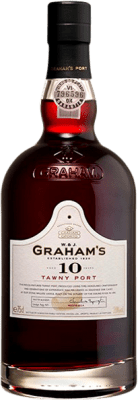









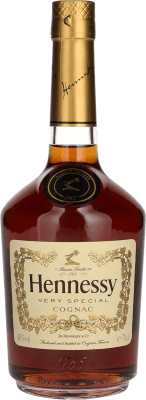


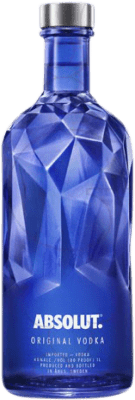


 Français
Français
 Deutsch
Deutsch
 Italiano
Italiano
 Português
Português
 中文
中文
 Русский
Русский
 日本語
日本語
 Belgium
Belgium
 Bulgaria
Bulgaria
 Croatia
Croatia
 Cyprus
Cyprus
 Czech Republic
Czech Republic
 Denmark
Denmark
 Estonia
Estonia
 Finland
Finland
 Greece
Greece
 Ireland
Ireland
 Latvia
Latvia
 Liechtenstein
Liechtenstein
 Lithuania
Lithuania
 Luxembourg
Luxembourg
 Monaco
Monaco
 Netherlands
Netherlands
 Norway
Norway
 Poland
Poland
 Romania
Romania
 San Marino
San Marino
 Slovakia
Slovakia
 Slovenia
Slovenia
 Spain, Balearic Islands
Spain, Balearic Islands
 Spain, Canary Islands
Spain, Canary Islands
 Sweden
Sweden
 Switzerland
Switzerland
 United Kingdom
United Kingdom

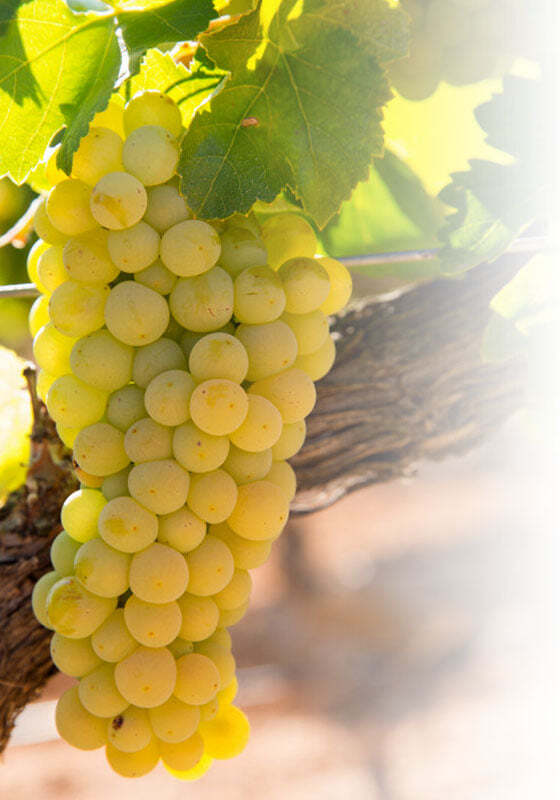
 EUR, Final price!
EUR, Final price!





